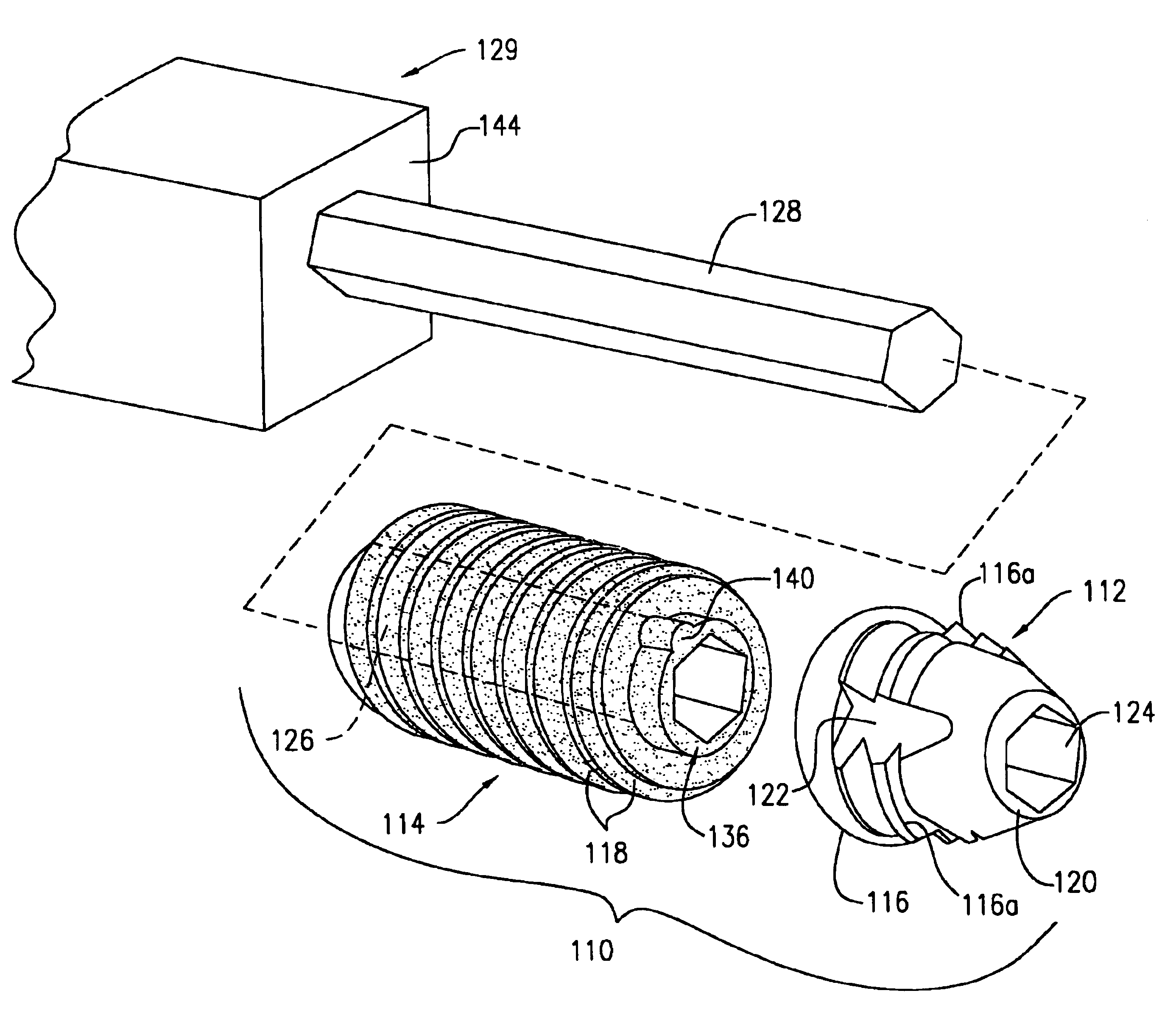Self-tapping resorbable two-piece bone screw
a two-piece bone screw and self-tapping technology, applied in the field of orthopedic screws, can solve the problems of chronic irritation and inflammation of surrounding body tissue, most frequently injured, and additional surgical procedures may be required
- Summary
- Abstract
- Description
- Claims
- Application Information
AI Technical Summary
Problems solved by technology
Method used
Image
Examples
example 1
[0033]Three screws were made for simulation of a bone-tendon-bone ACL repair. Two of the screws were controls. The controls were monolithic in nature, i.e. composed of a single material, and of a one-piece design which incorporated all of the features of the present invention except for the means of connecting a front and rear component.
[0034]The first control was composed of poly(lactic acid), or PLA, machined from billets of PLA previously formed by injection molding. The second control was composed of a composite of 20 / 80 (volume percent) β-tricalcium phosphate (TCP) particles (10-micron average diameter) in PLA. These screws were also machined from billets of TCP / PLA composites previously formed by injection molding.
[0035]The third screw included a front and rear component. The rear component was composed of PLA machined from the same billets of PLA formed by injection molding as mentioned above. The front component was composed of metal machined from the rods of cold rolled sta...
PUM
 Login to View More
Login to View More Abstract
Description
Claims
Application Information
 Login to View More
Login to View More - R&D
- Intellectual Property
- Life Sciences
- Materials
- Tech Scout
- Unparalleled Data Quality
- Higher Quality Content
- 60% Fewer Hallucinations
Browse by: Latest US Patents, China's latest patents, Technical Efficacy Thesaurus, Application Domain, Technology Topic, Popular Technical Reports.
© 2025 PatSnap. All rights reserved.Legal|Privacy policy|Modern Slavery Act Transparency Statement|Sitemap|About US| Contact US: help@patsnap.com



